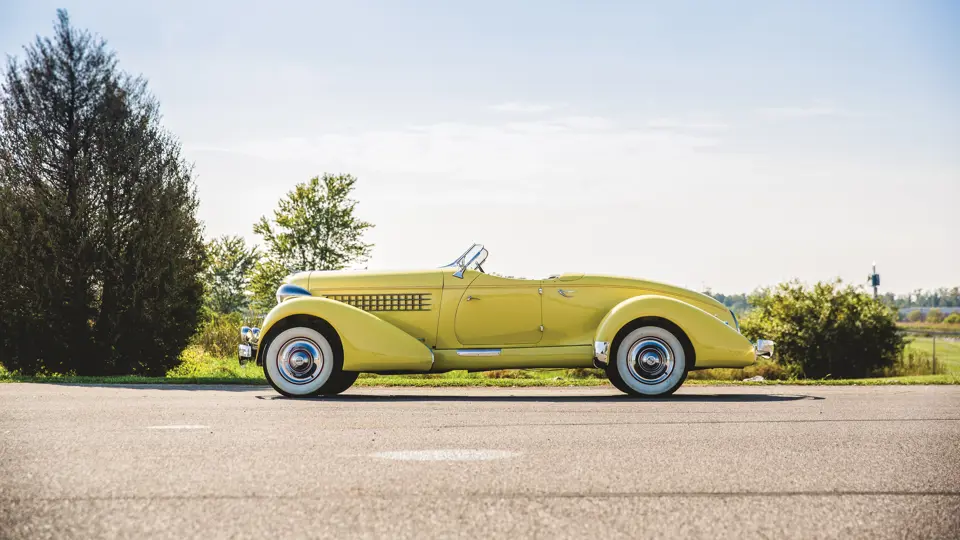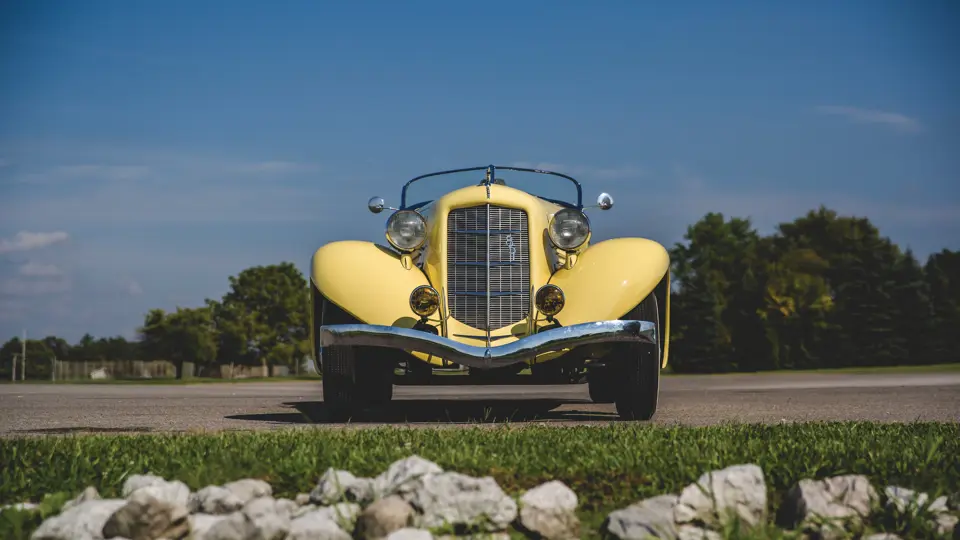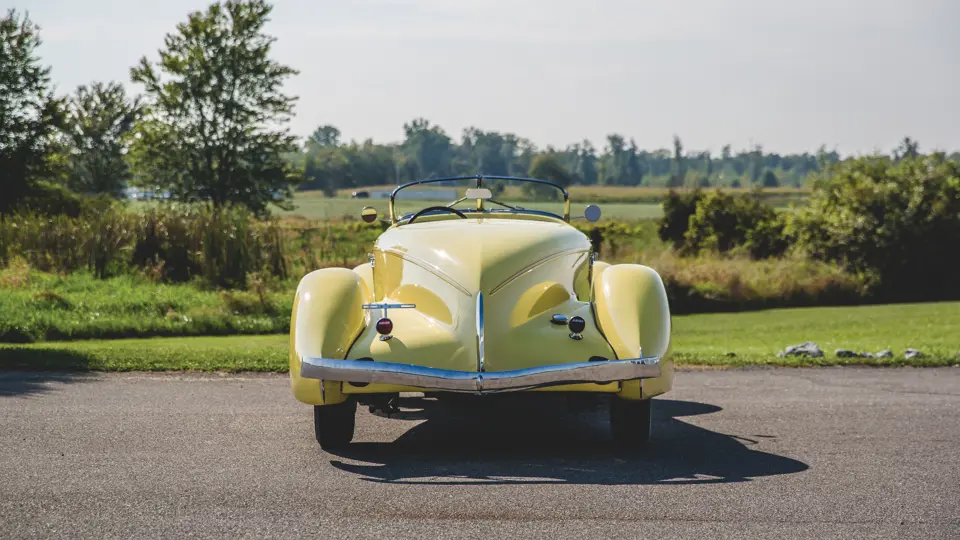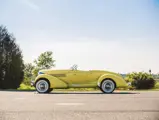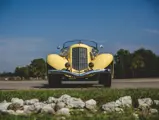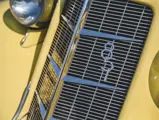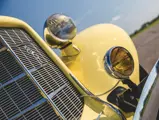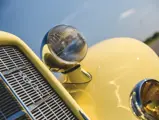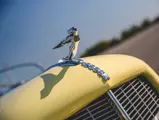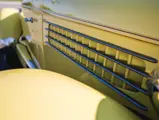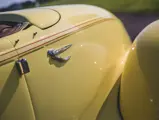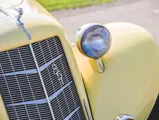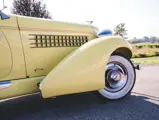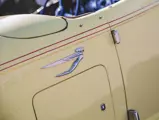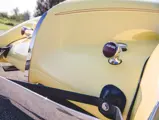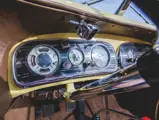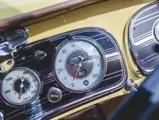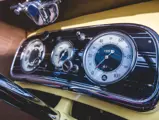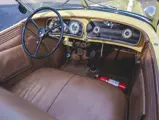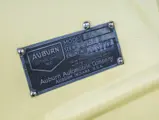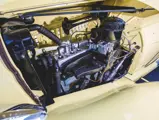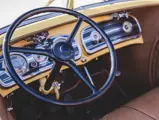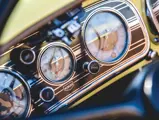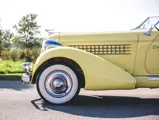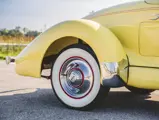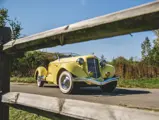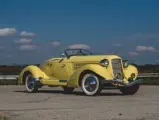
1935 Auburn 851 Custom Speedster
{{lr.item.text}}
$544,000 USD | Sold
Offered from the Richard L. Burdick Collection
{{bidding.lot.reserveStatusFormatted}}
- Offered from the Richard L. Burdick Collection
- The only example originally delivered without a supercharger
- Original engine, chassis, and body
- A pure, unadorned vision of Gordon Buehrig’s revered design
Taking the job of general manager at Auburn in 1923, E.L. Cord obtained an agreement that if sales improved sufficiently, he could buy into the firm. He then spruced up the accumulated inventory of unsold Auburns with bright paint jobs and nickel trim, and quickly sold them all. By 1926, Cord was president of the company and held a controlling interest. He readied new models and positioned Auburn as a performance car at a low price, which further enhanced sales. Among these was a low-priced eight-cylinder car, good value at its $1,895 price tag in 1925, and even better at $1,395 two years later.
Stutz was then making a name for itself on America’s racing circuits, and Auburn took up the challenge. Auburn’s answer was a handsome boat-tailed speedster. Introduced in the second series for 1928, the 8-115 speedster was said to have been styled by Alexis de Sakhnoffsky, the Russian count who had emigrated to the U.S. in the 1920s to work at Auburn. The company embarked on a competition foray, sending speedsters to Europe and South America, one of them campaigned by Malcolm Campbell, the London distributor. In the U.S., driver Wade Morton clocked 108.46 mph with a speedster on a measured mile at Daytona Beach and covered 2,033 miles in 24 hours for a record 84.7 mph average at Atlantic City. He also set a new record at Pike’s Peak. The results were satisfying, the publicity wonderful.
The 1931 line was redesigned by Alan Leamy, a young designer Cord had hired to work on his L-29 project. Leamy applied some of the Cord hallmarks to the Auburn body, adapting the L-29’s split grille shell as a focal point of the design. The 1931 cars became the best-selling Auburns ever. A new speedster was added to the line in the autumn, with raked windshield and boat-tail, one of the handsomest Auburns of all time.
For 1932, Cord and his Auburn team had another ace up their sleeves, a V-12. Priced as low as $1,105, it represented incredible value during hard times. The same year, a Columbia two-speed rear axle became available, enabling a choice of drive ratios, effectively six speeds ahead. For 1934, a six-cylinder car was re-introduced, alongside a restyled eight. A diminished V-12 line was kept alive in upscale Salon trim but using the old bodies. At year’s end, the twelve was history, but Auburn had one more arrow in its quiver. The company pulled out all the stops for what would be the final speedster.
The 1935 Auburn styling was the work of Gordon Buehrig, who had designed the immortal Model J Duesenberg. Making the 1934 theme more upright, yet more graceful, Buehrig also lowered the speedster’s tail, making it smoother and more aerodynamic. With the V-12 gone, a more powerful eight was called for, so Auburn turned to August Duesenberg to adapt the Model J’s centrifugal concept to the side-valve engine. With 6.5:1 compression, the supercharged Model 851 developed 150 bhp at 4,000 rpm. On the Bonneville salt flats, company driver Abner “Ab” Jenkins set 70 new unlimited and American speed records for stock cars. Each new speedster was delivered with a dashboard plaque certifying that the car had been driven by Jenkins to more than 100 mph.
A TRULY UNIQUE AUBURN SPEEDSTER
This iconic Cigarette Cream Speedster has the distinction of being the only known example built without a factory supercharger. Actually built in Auburn, rather than at the Cord production facility in Connersville as were most speedsters, it was reportedly sent out early for the Boston automobile show, before the superchargers were ready. The early engine number, 3777 (numbering began at 3735), supports this explanation, as does the original serial number, which lacks the “3” prefix of a supercharged example. Further, surviving Auburn corporate records do note the delivery of a single early example sans “blower.”
Prior owners included the late Houston collector John O’Quinn, and Mark Vantatenbow of Michigan; earlier, the car enjoyed a number of owners on the East Coast and was included in the roster of surviving authentic speedsters published in the Auburn Cord Duesenberg Club Newsletter in 1996. The car remains in excellent condition throughout, in its classic color scheme with brown leather seating, exhibiting only modest signs of use. Without the supercharged engine’s side exhaust, the car’s appearance is smooth and pure, with the only interruption of the clean lines being bumper-mounted fog lights.
Iconic and unique, this truly “one-off” Auburn represents a singular opportunity.


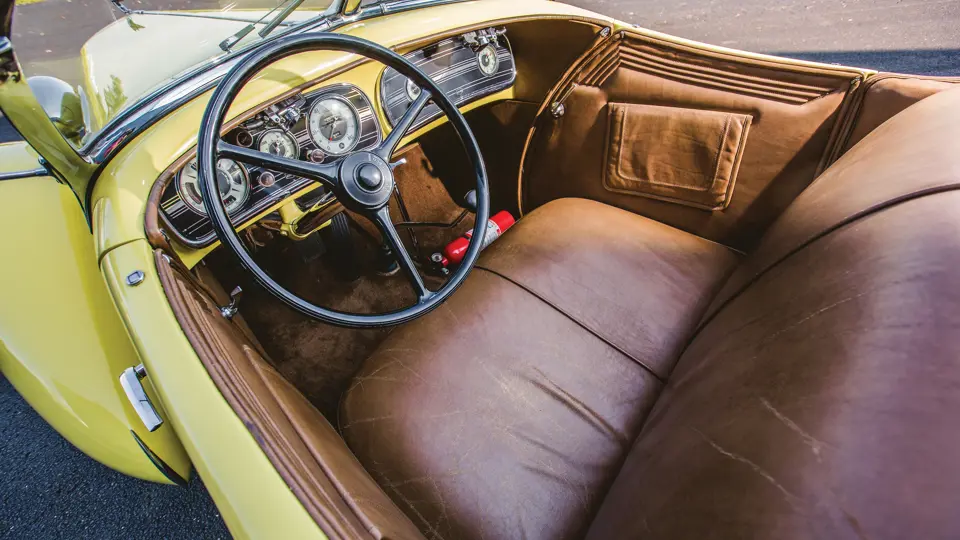

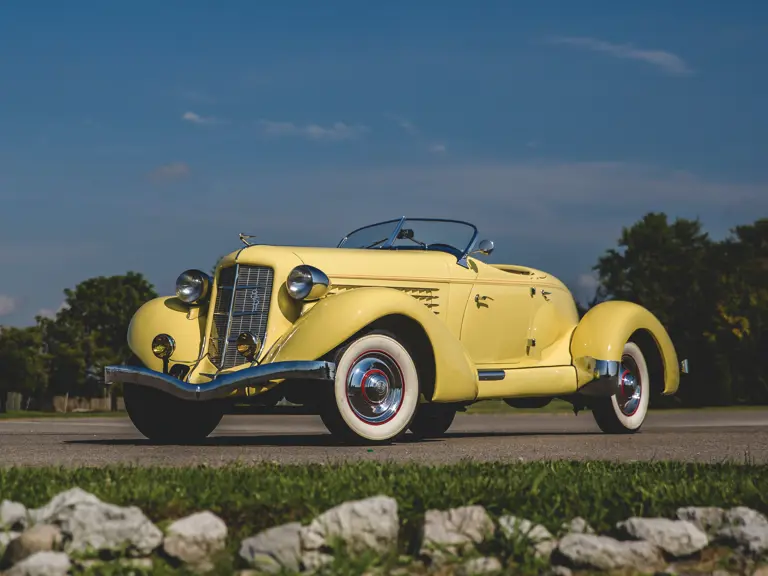
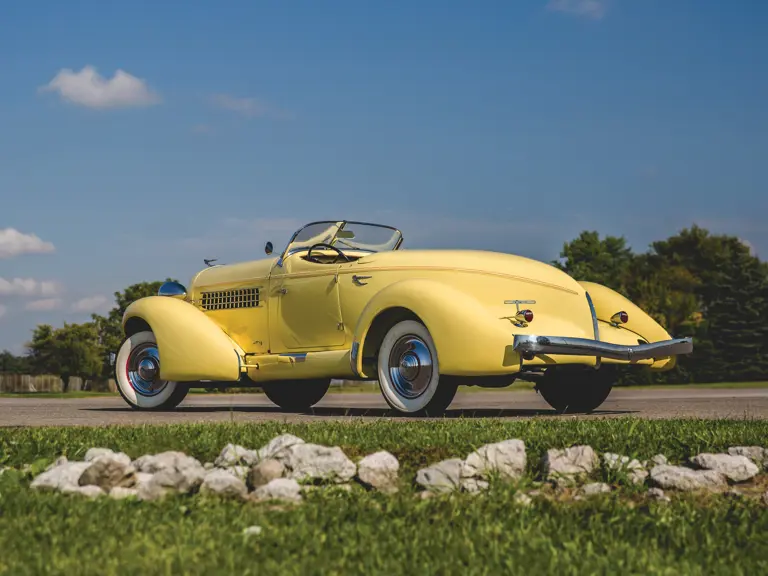
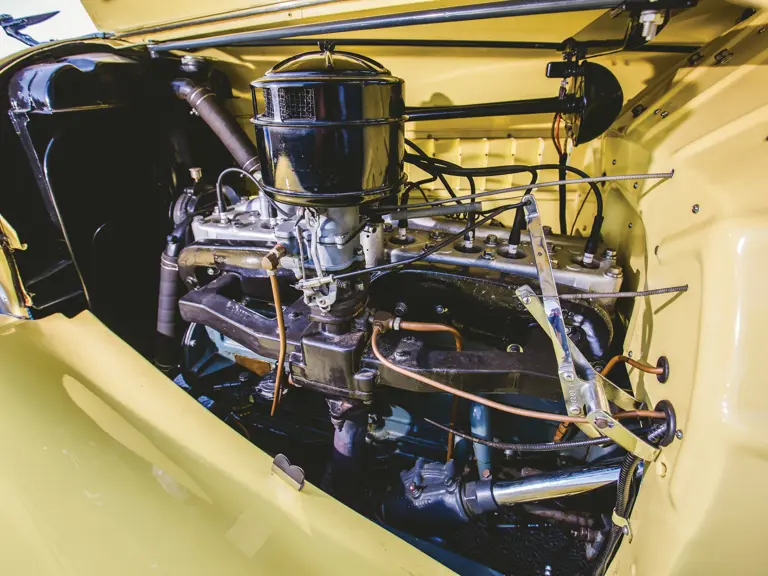

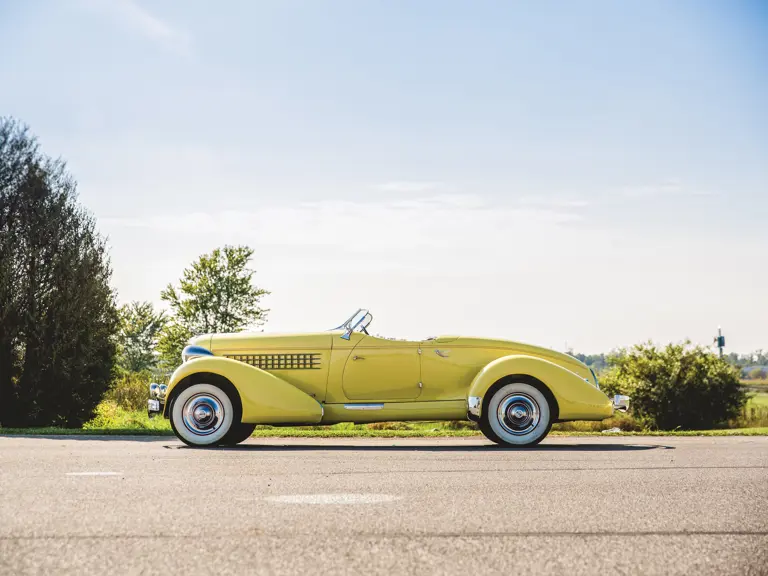
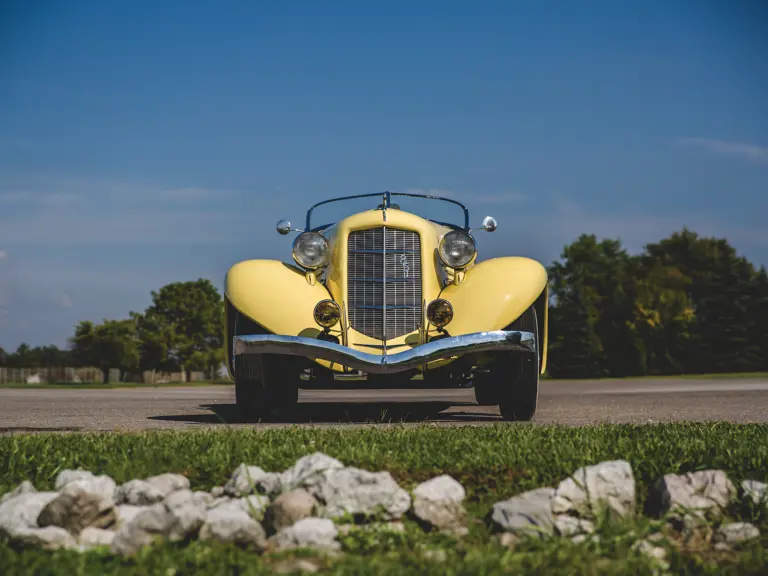
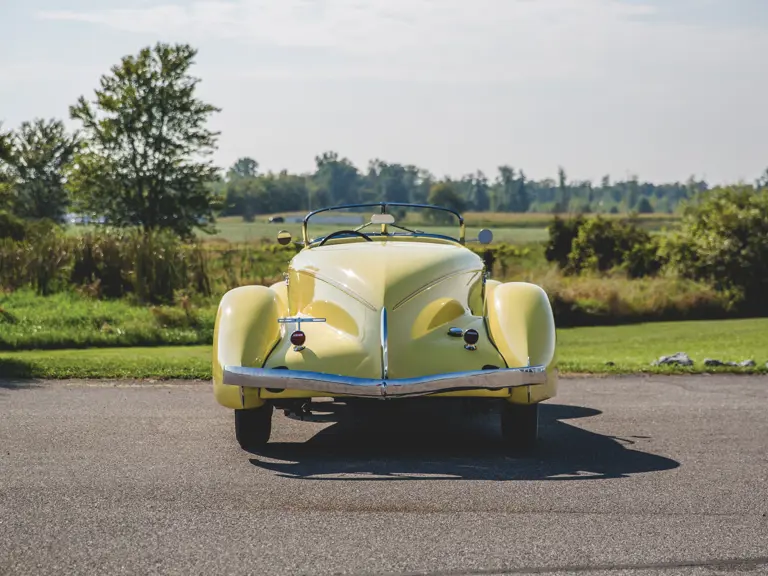
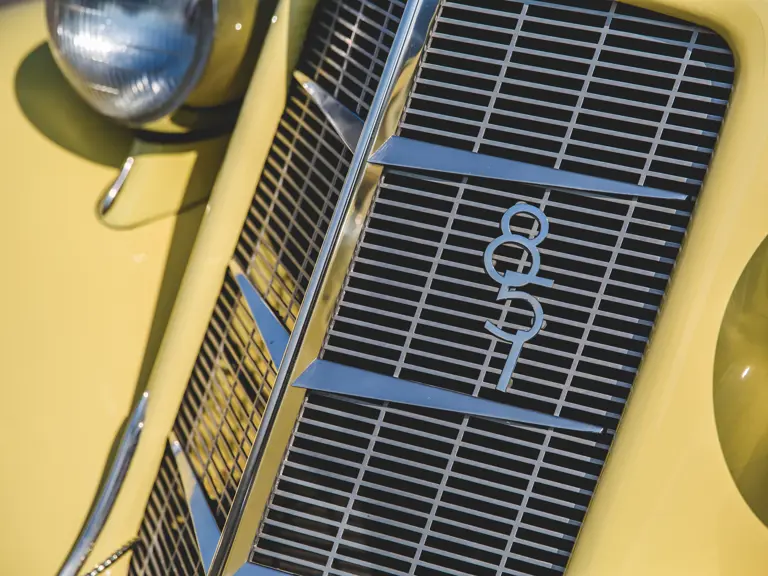
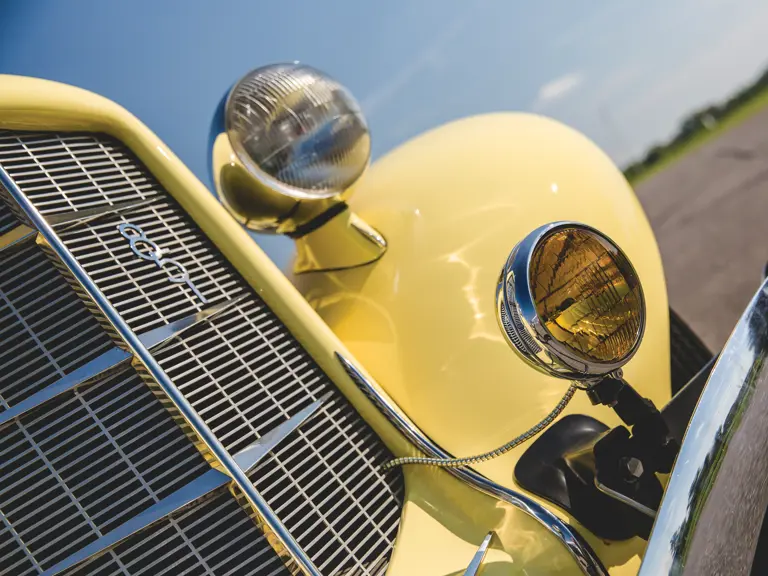
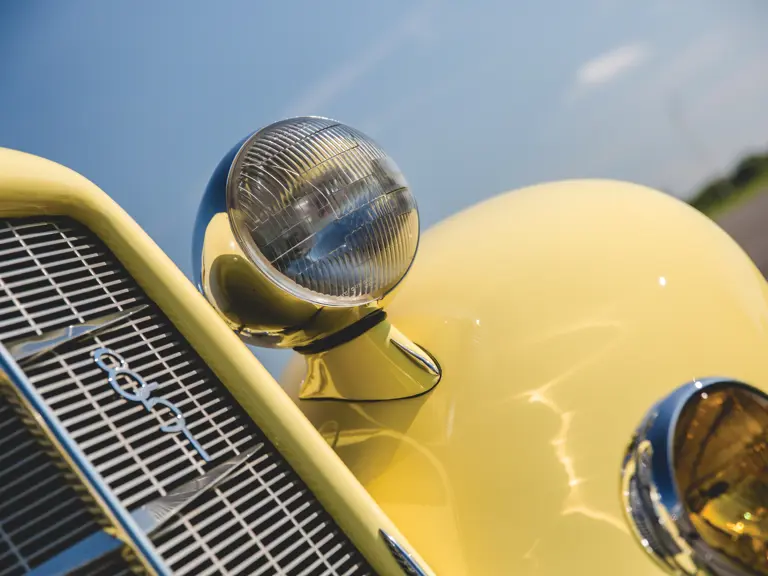
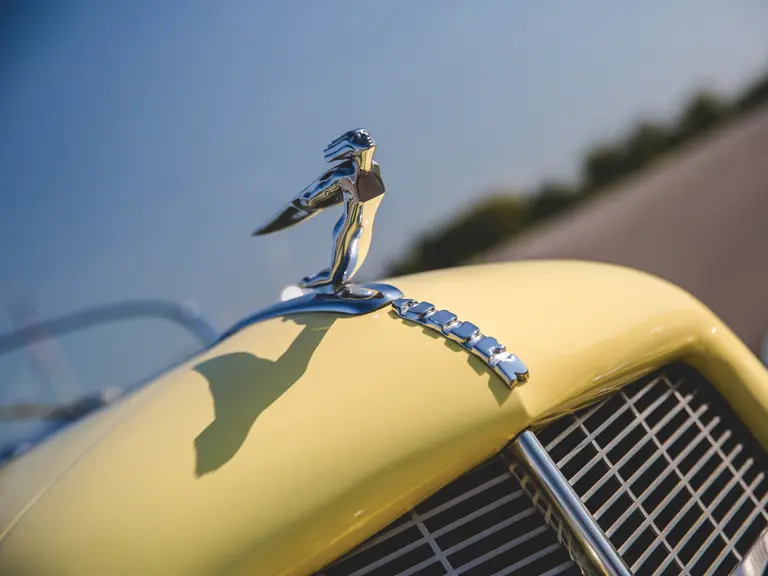
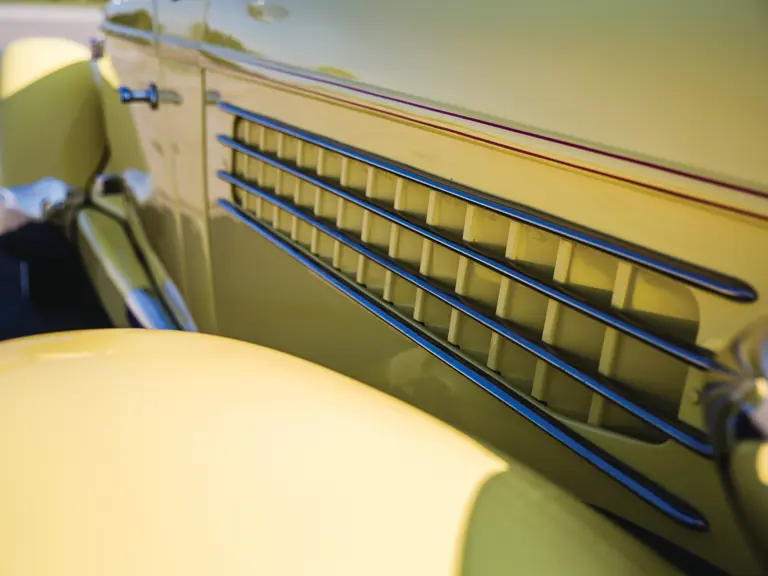
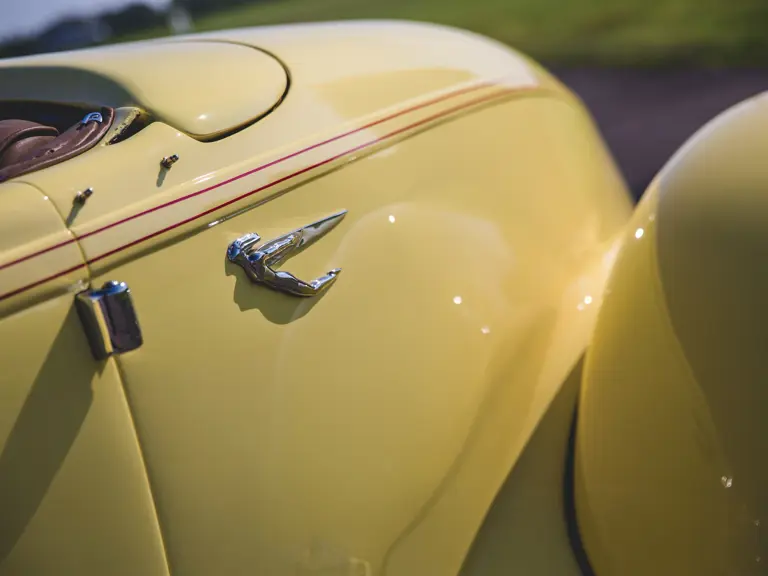
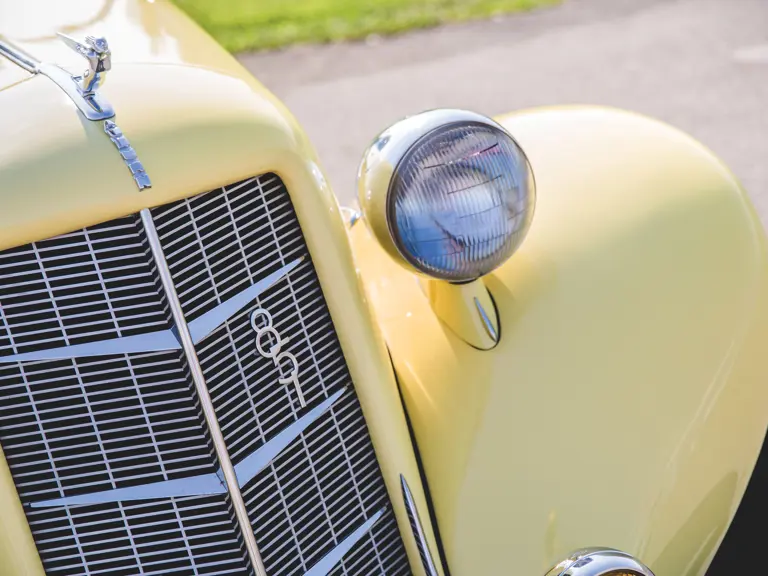
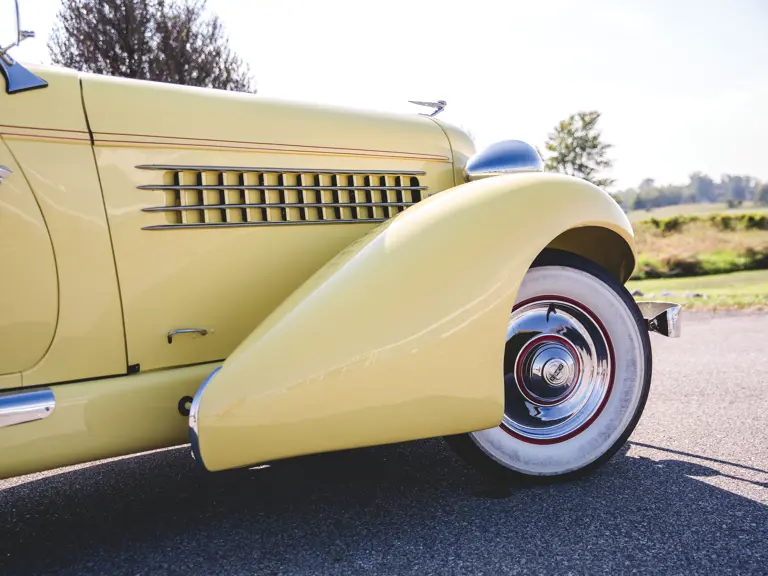

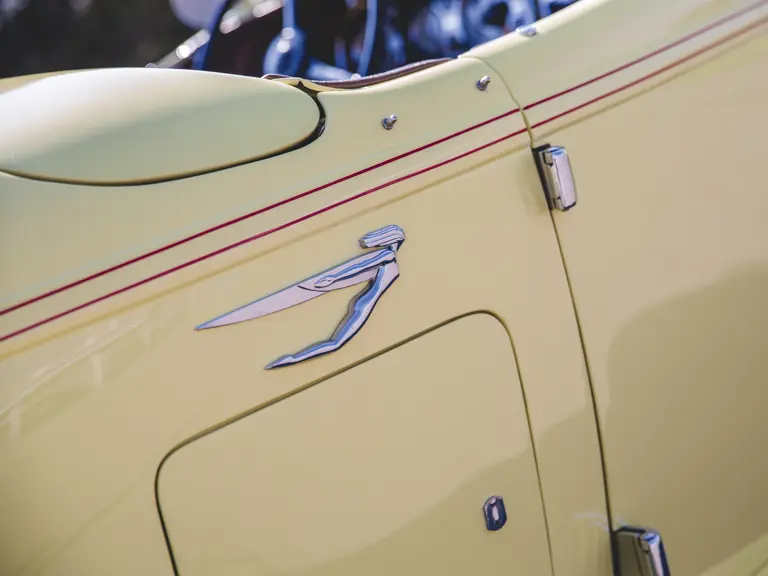


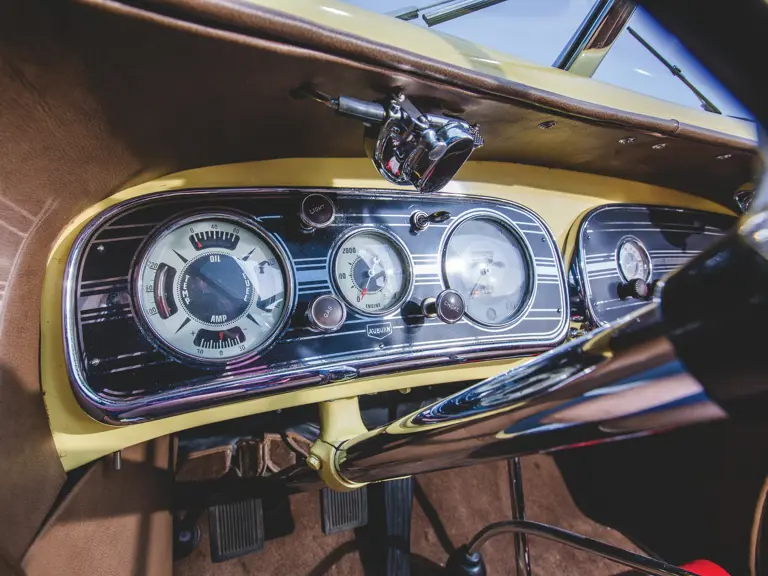
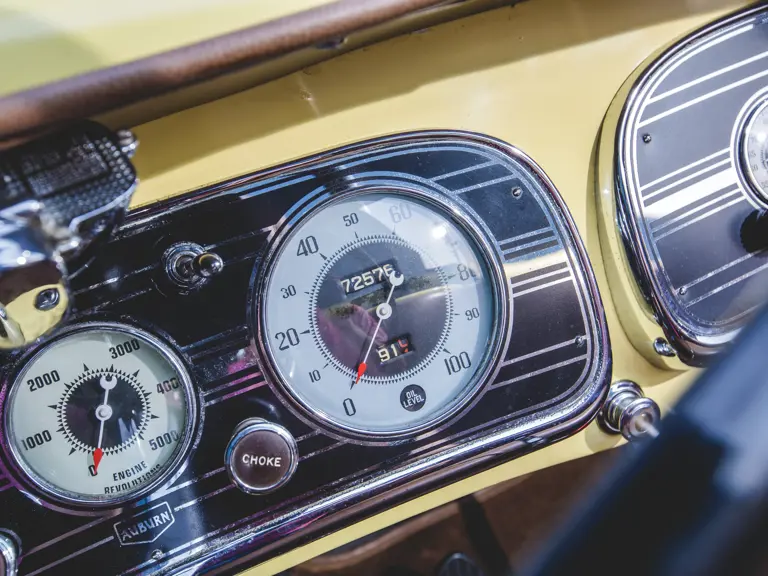

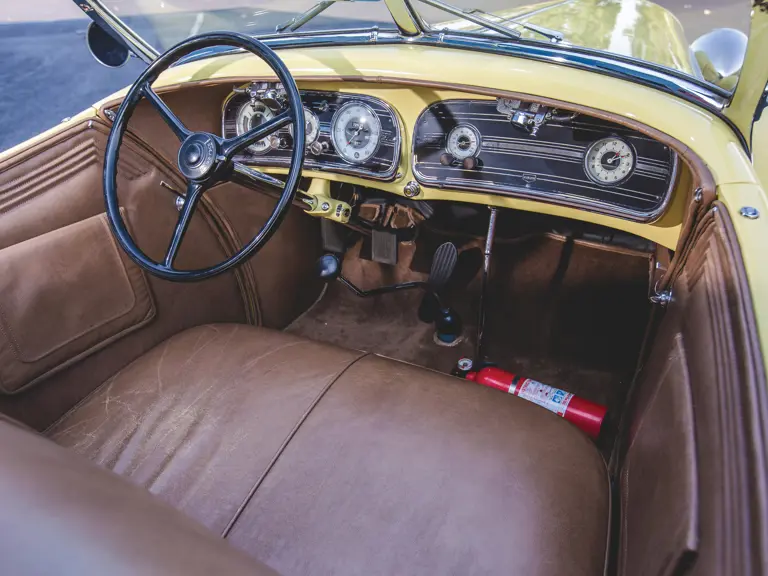
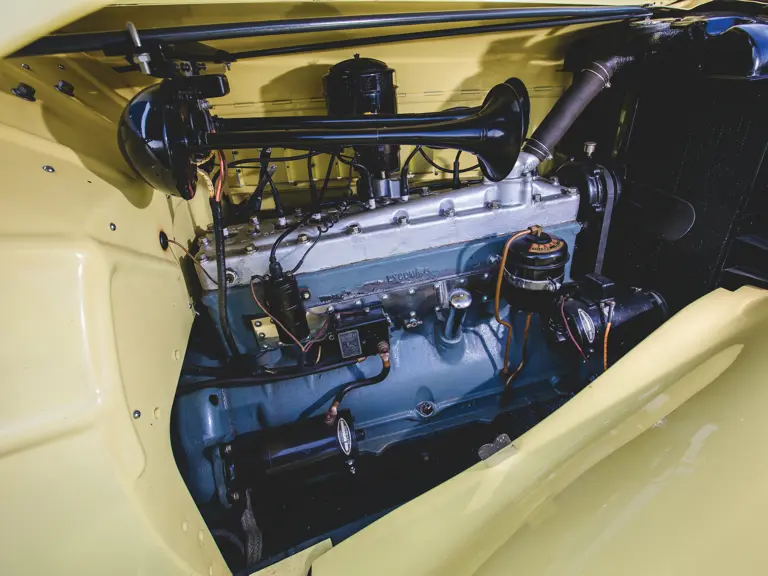
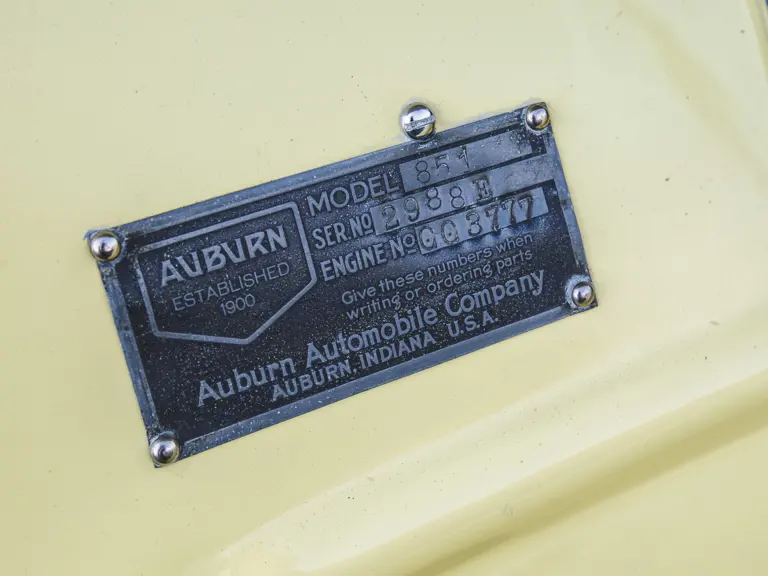
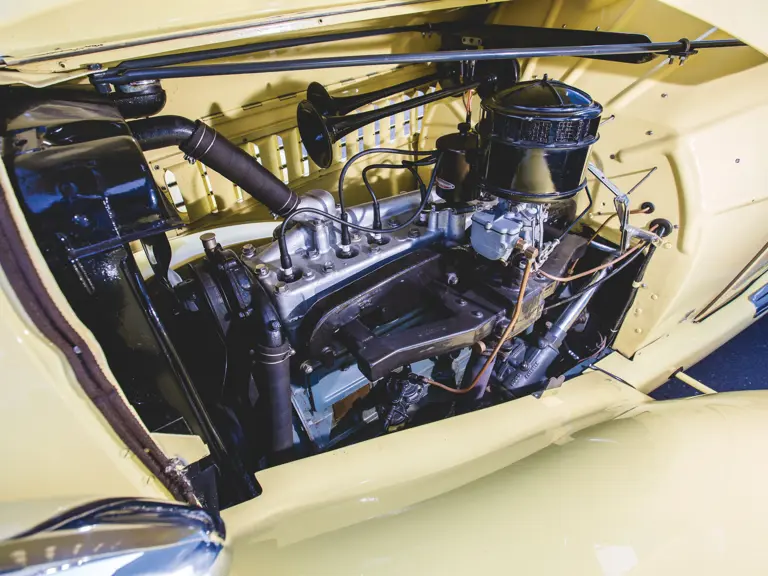
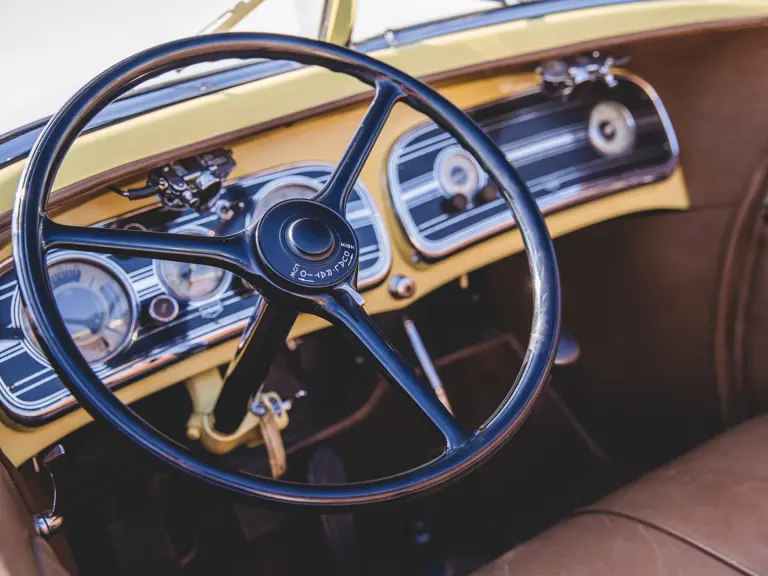
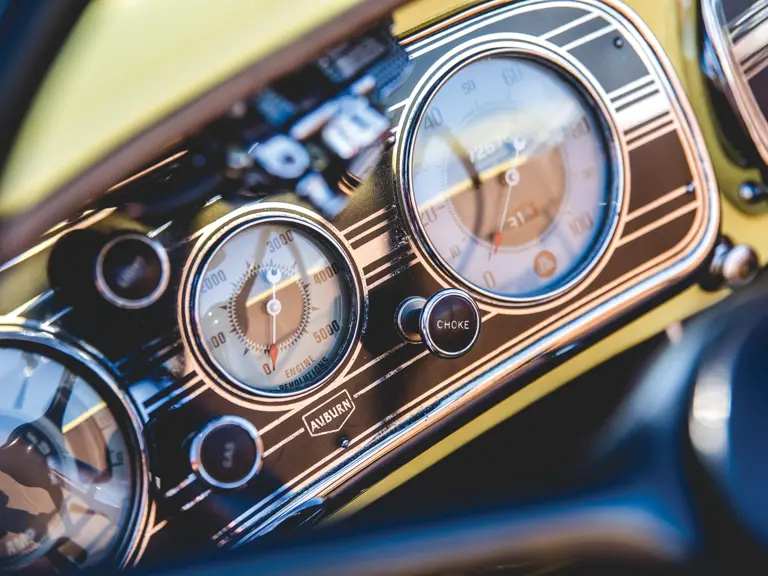
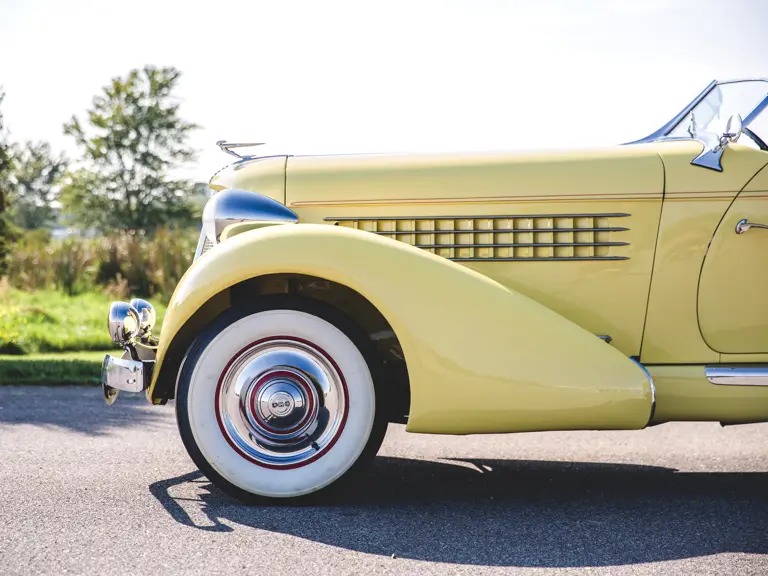
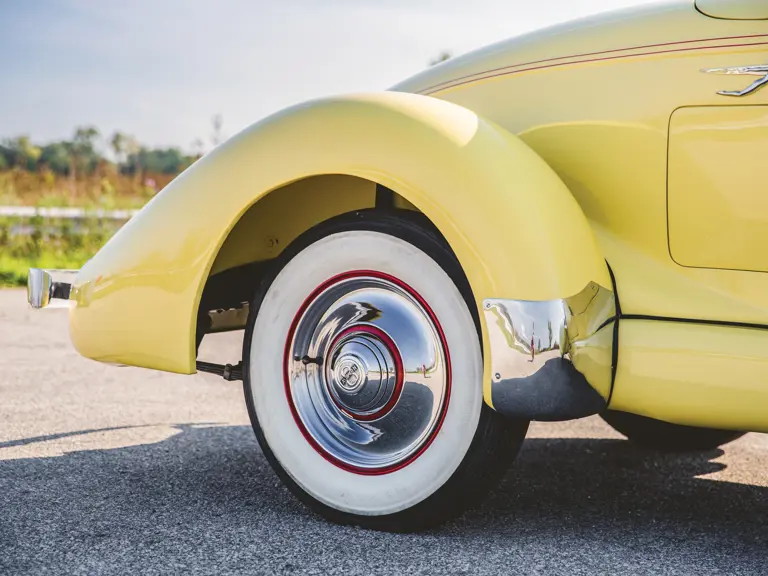
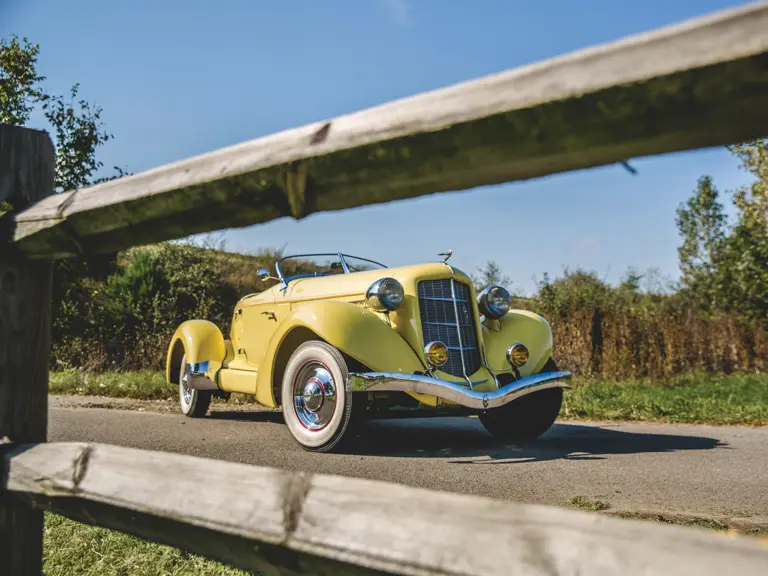
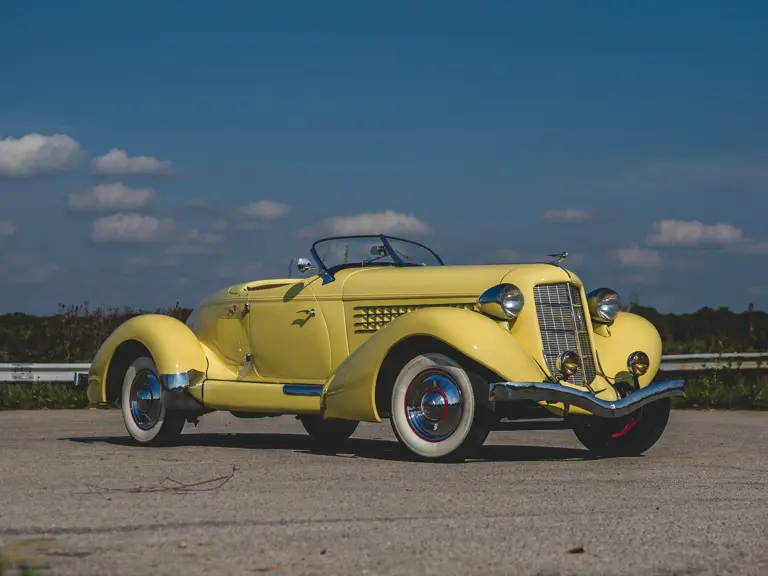
 | Amelia Island, Florida
| Amelia Island, Florida
